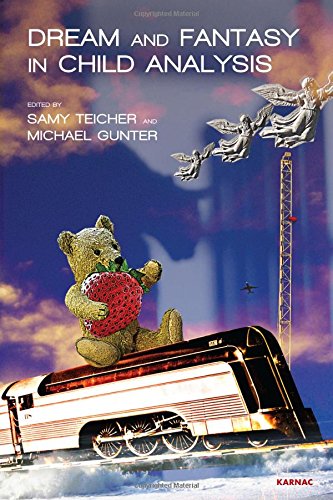Dream and Fantasy in Child Analysis

Book Details
- Publisher : Routledge
- Published : 2015
- Cover : Paperback
- Pages : 160
- Category :
Child and Adolescent Studies - Category 2 :
Psychoanalysis - Catalogue No : 33865
- ISBN 13 : 9781780491912
- ISBN 10 : 1780491913
Reviews and Endorsements
‘This invaluable book tackles a topic of psychoanalysis that is much in need of more in-depth exploration and offers receptive readers new ways of thinking about dreaming. Since the classic Freudian model, we have entered into the universe of reveries, the dream process whereby sensory stimuli are transformed into the unconscious, transformations in dreaming, and co-dreaming the sessions. This is a book that leads its readers through new territory and invites them to enjoy the fascination and wonder of the unknown. It is a brave book that dares to dream new dreams for psychoanalysis.’
––Antonino Ferro, member of the Società Psicoanalitica Italiana and APsaA
‘Is it possible that we see an increasing interest in the psychoanalytical understanding of dreams – in an era of neuroscientific discoveries and the development of psychotherapy techniques that pay little attention to the unconscious? The authors, all experienced child psychoanalysts, answer in the affirmative. The reason is that they, like most of today’s psychoanalysts, see the dream as the prototype of a kind of deep thinking that modern man is eager to rediscover. However, accounts and reflections on dreams are often surrounded by embarrassed and pseudo-rational attitudes. One would expect this to be less salient with children, but often they do not report dreams spontaneously. The authors explore the reasons for this and how dreams, nevertheless, may be used in child therapy. This fine book is of interest to anyone who seeks to explore at depth the minds of children.’
––Björn Salomonsson, MD, PhD, Psychoanalyst (IPA) and researcher at the Department of Women’s and Children’s Health, Karolinska Institutet, Stockholm
‘An amazing book on children’s dreams and fantasies, presenting different points of view by child and adolescent analysts from many nations. It shows the complexity, diversity and complementarity of different approaches. Any person working with children or adolescents in a psychoanalytic way will benefit from reading this book.’
––Dieter Bürgin, psychoanalyst for children, adolescents and adults

